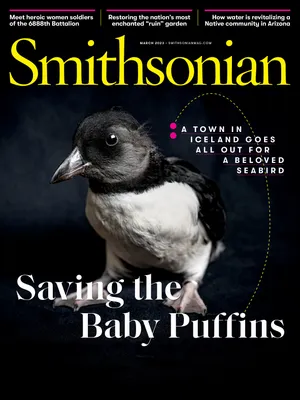A basalt coastline crowded with large, lounging iguanas looks nothing short of Jurassic. When I first saw these striking creatures in the Galápagos, I was impressed most by their placidness. Unfazed by humans, they spend long, sunny days warming in the equatorial sun like scaly house cats, sometimes in heaps, between foraging missions at sea to feed on marine algae.
Charles Darwin was famously unimpressed with this rare seafaring lizard. “It is a hideous-looking creature,” he wrote in The Voyage of the Beagle, “stupid, and sluggish in its movements.”
Since those encounters, however, the iguanas have won over many scientists. “I enjoy them because they come across as very amiable and easygoing,” says Amy MacLeod, a conservation biologist at Leipzig University, who studies marine iguana populations. “They are quite ungainly on land but very graceful in the water.”
Surviving almost entirely on algae, these lizards, some of which grow longer than four feet, evolved flat tails for swimming and glands that filter and remove excess salt (which they expel through their nose by sneezing). They can also absorb their own bone marrow and shrink in size to help them survive famine when warmer waters during El Niño events make marine algae scarce. Despite such adaptations, however, marine iguana populations are vulnerable. Feral dogs, cats and even rats have taken a bite out of their numbers. Increased development on these alluring islands is also a threat. So are oil slicks, El Niño events intensified by climate change and plastic waste.
But just how serious the risk is to the lizards remains a mystery. “We don’t have enough data on the trajectories of populations,” MacLeod says. One reason is that for years the iguanas were presumed, unlike Darwin’s famous Galápagos finches, to be fairly uniform across the islands, making the stakes for the animal lower even if one population seemed to be faltering. But recent genetic research conducted by MacLeod and others has revealed 11 distinct subspecies, each of which requires individualized conservation efforts. MacLeod and her colleagues have launched a program known as Iguanas From Above, flying drones to get a better picture of these populations and enlisting the public to help count the lizards.
MacLeod is encouraged by the thriving marine iguana populations on Fernandina, the westernmost of the main Galápagos islands, where human impact is minimal and the waters produce ample fodder for these elegant swimmers. “The colonies there are a joy to behold,” she says, “because they give the impression of a land before time.”
:focal(3228x2260:3229x2261)/https://tf-cmsv2-smithsonianmag-media.s3.amazonaws.com/filer_public/e5/86/e58607f7-0c78-4c09-b779-881d9490155d/mar2023_c01_edangeredmarineiguana.jpg)
